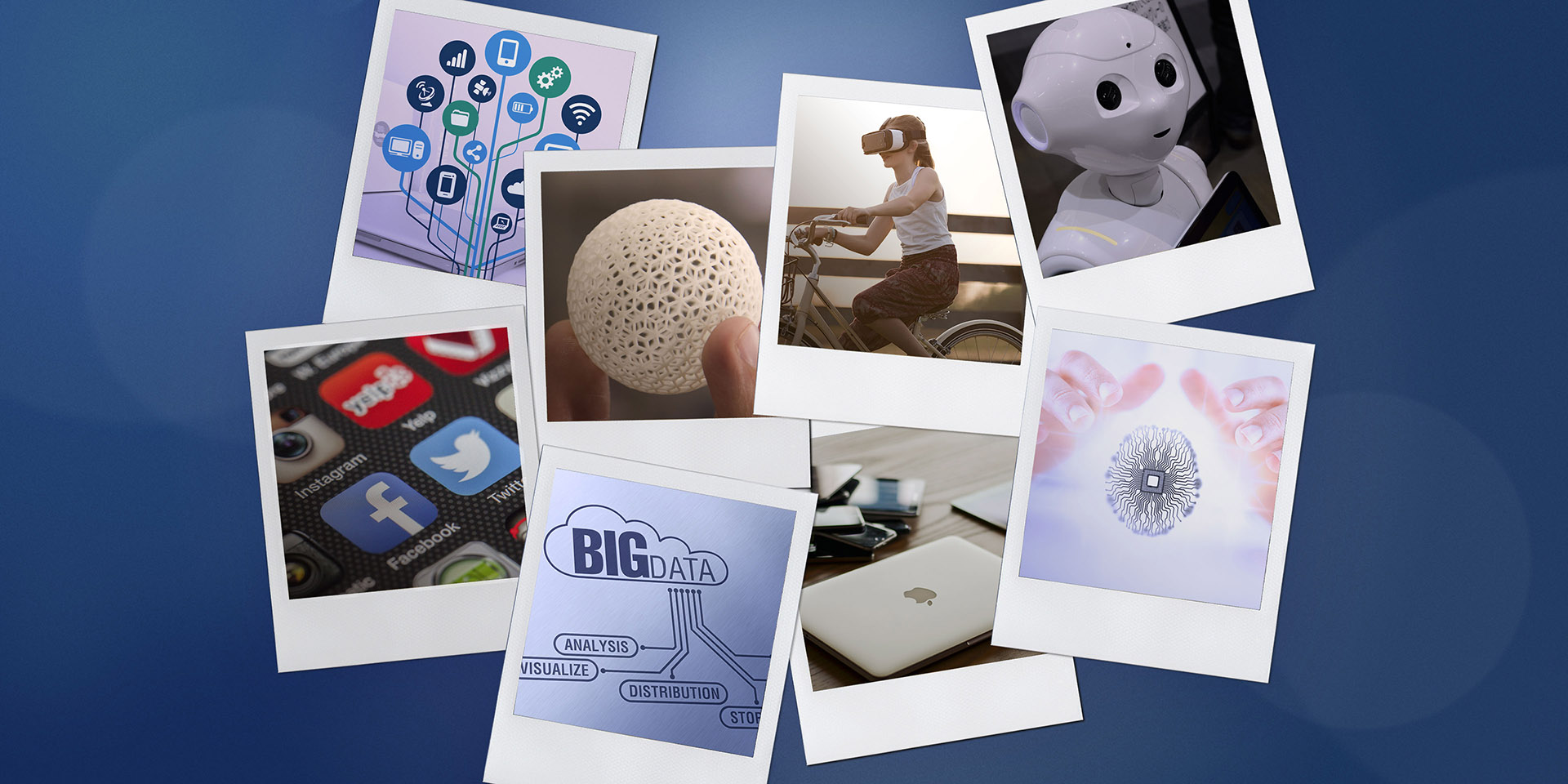
Technology changes happen so fast and are so far-reaching, that they are re-defining reality and transcending the limits of what is possible and what is not. This is also true for the area of document technology.
Technology is invading every aspect of our daily lives. Of the 7.5 billion people on Earth, 4.92 billion own a mobile device, 3.77 billion use the Internet, 2.79 billion are active social media users and 2.6 billion own a smartphone. The figures speak for themselves, but it is worth illustrating the true extent and speed at which digital technologies are expanding throughout our lives with specific examples.
The phone took 75 years to reach 100 million people around the world, but since then, those time spans have been shortening considerably: the mobile phone took only 16 years; Internet, seven; Facebook, less than five, WhatsApp, less than four, Instagram, about two, and Candy Cash Saga, just one year. At that speed, there is very little time to assimilate changes. Hence the importance for companies of being up-to-date and having real-time information.
Whoever fails to keep up with current trends will be left behind in a matter of minutes. And that is no exaggeration. Let’s see what happens in just one minute on the Internet: 2,664 smartphones purchased worldwide; in the USA, $114,000 is spent on Internet advertising and $647,000 on e-commerce; 764,000 photos are shared via WhatsApp; 2,283 personal records are hacked; an IP traffic volume of around 1.7 PB is generated (1 PB equals 106 GB); payments for an estimated $1.18 million are made via mobile devices and 131,000 apps are downloaded.
Relevant Trends for the Document Technology Sector
Technology changes happen so fast and are so far-reaching, that they are re-defining reality and transcending the limits of what is possible and what is not. The following eight technologies constitute a clear example. They have come to stay and are changing operation methods in any business and in society in general.
As these technologies have a great impact, they cannot be ignored in the document technology sector either. Document software solution manufacturers are faced with the challenge of developing innovative applications that respond to the needs of today’s society and tomorrow’s generation.
- Cloud: Cloud technology reduces network infrastructures required at corporate facilities and enables remote collaboration. Moreover, it multiplies processing capacity and scalability levels, and makes maintenance of HW resources much more flexible and cost-efficient.
- SoLoMo: Short for Social, Local and Mobile, this technology emerged as a result of the growing popularity of social networks, the ability to know the location of the customer and the widespread use of mobile phones in society. It basically allows companies to establish a truly continuous and more personalized relationship with their customers.
- Big Data analysis: Big data analysis applications allow companies to predict the probability of certain events happening and the possible reactions to those events. This, in turn, helps enterprises make better-informed decisions, customize customer relationships, and optimize their operational models.
- Automatic learning: Today, machines are able to improve their own performance based on data and prior experiences. In other words, they are capable of learning and are not limited to reprogramming. This is possible thanks to neural networks, whose core unit of data processing is the ‘neuron’, in allusion to the neurons of the human brain.
- Internet of Things: In our daily life, we use a large number of digital devices. There are devices we wear (e.g. watches), devices that are integrated into other devices or machines (e.g. in our car) and we even have devices that are implanted in our body for health reasons. And all of them are connected to each other through the internet, integrating the physical and the digital world through sensors.
- Augmented reality: New devices and visualization technologies allow us to add a layer of digital information to the images we see through our eyes. By enhancing our eyesight, our productivity levels can be greatly increased, which is especially important in a lot of precision tasks performed in the industrial sector.
- 3D printing: This technology allows users to create 3D objects from a digital file by adding layer upon layer of a certain material to create the 3D object. This type of printing has completely changed manufacturing and reduced the size of manufacturing lines.
- Advanced robotics: Robots are becoming increasingly sophisticated and complex, allowing them to perform tasks which, up to recently, could only be done by humans. In the future, most likely many jobs will be lost as a result of robotics, but it will also boost industrial productivity.
The Impact of Industry 4.0
The industry sector is, without a doubt, the business area that is undergoing most changes as a result of the above-mentioned technologies, In fact, it is experiencing a sort of fourth revolution, called Industry 4.0. It actually seems to be the most complex revolution to date, as it involves a connection between the physical and digital worlds, giving rise to cyber-physical systems (CPS), and allowing for dynamic and real time data processing.
New technologies are clearly having a strong impact in all business sectors and the area of Document Output Management is no exception. Advanced document technology solutions are currently developed to help automate more tasks and make businesses faster. For example, in program-user interactions, the keyboard will be used less, making way for document generation from verbal indications, which will greatly streamline document processes and increase work efficiency.
Sources:
- http://www.blogdegestiondocumental.com/las-maquinas-toman-el-mando-bienvenidos-a-la-automatizacion-del-trabajo/
- https://bbvaopen4u.com/es/actualidad/tendencias-en-desarrollo-para-2017
- http://www.tendencias21.net/TENDENCIAS-INFORMATICAS_r22.html
André Klein
Freelance Consultant for DocPath
